Abstract
Whole-body exposure of mice to 50, 100, 300, or 500 rads results in an acute dose-related decrease in the number of viable recirculating T cells. The magnitude of this decrement becomes more pronounced with the passage of time. The dose-response relationship over this range of dosages appears to consist of three components: a steep drop between 0 and 50 rads, a plateau between 50 and 500 rads, and a second drop between 300 and 500 rads. The residual radioresistant cells are able to recognize a histoincompatible skin graft during the initial 5 days after irradiation. Low to moderate doses (50 to 300 rads) abrogate the partial tolerance noted in nonirradiated recipients exposed to the skin graft for 5 days and then regrafted from the same donor source 25 days after complete removal of the primary graft. A large (500 rads) dose results in prolonged graft survival in comparison with the nonirradiated group. It is suggested that the subpopulation fo recirculating T cells which develops partial tolerance during a 5-day exposure to a homograft is more radiosensitive than the effector subpopulation which is involved in graft rejection.
Full text
PDF
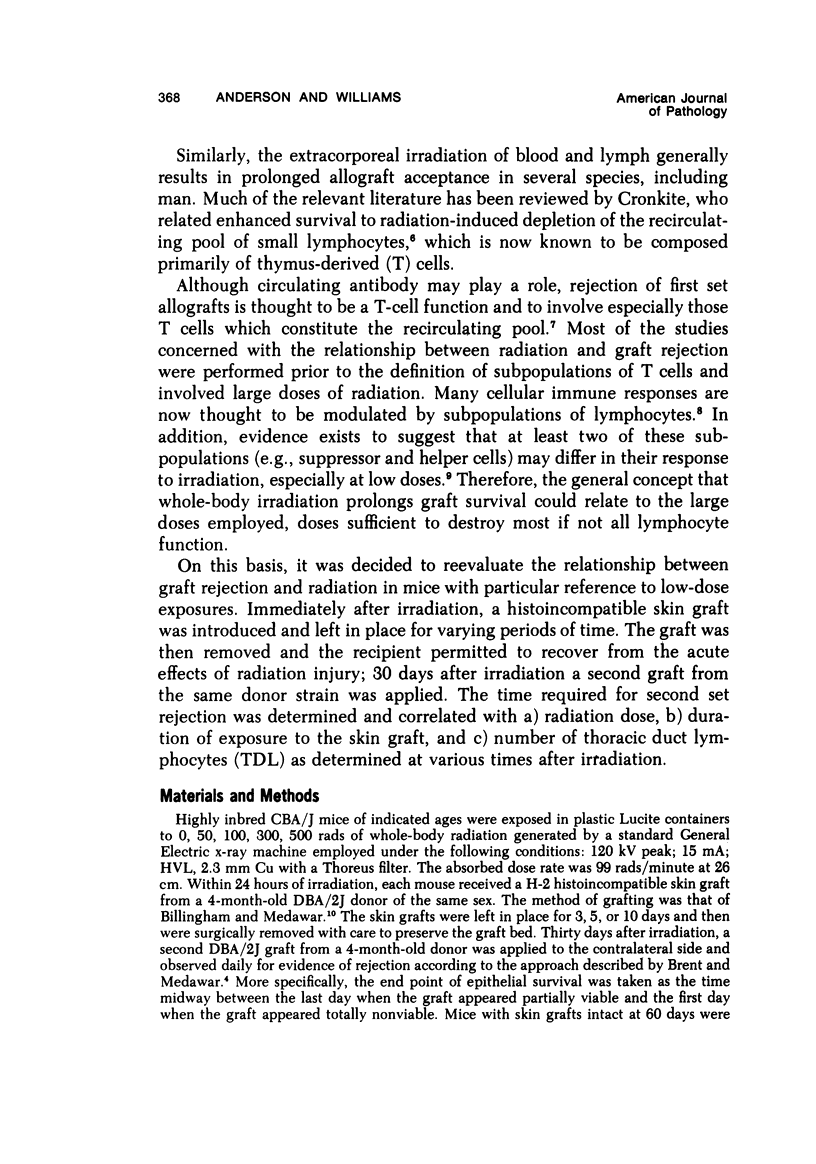
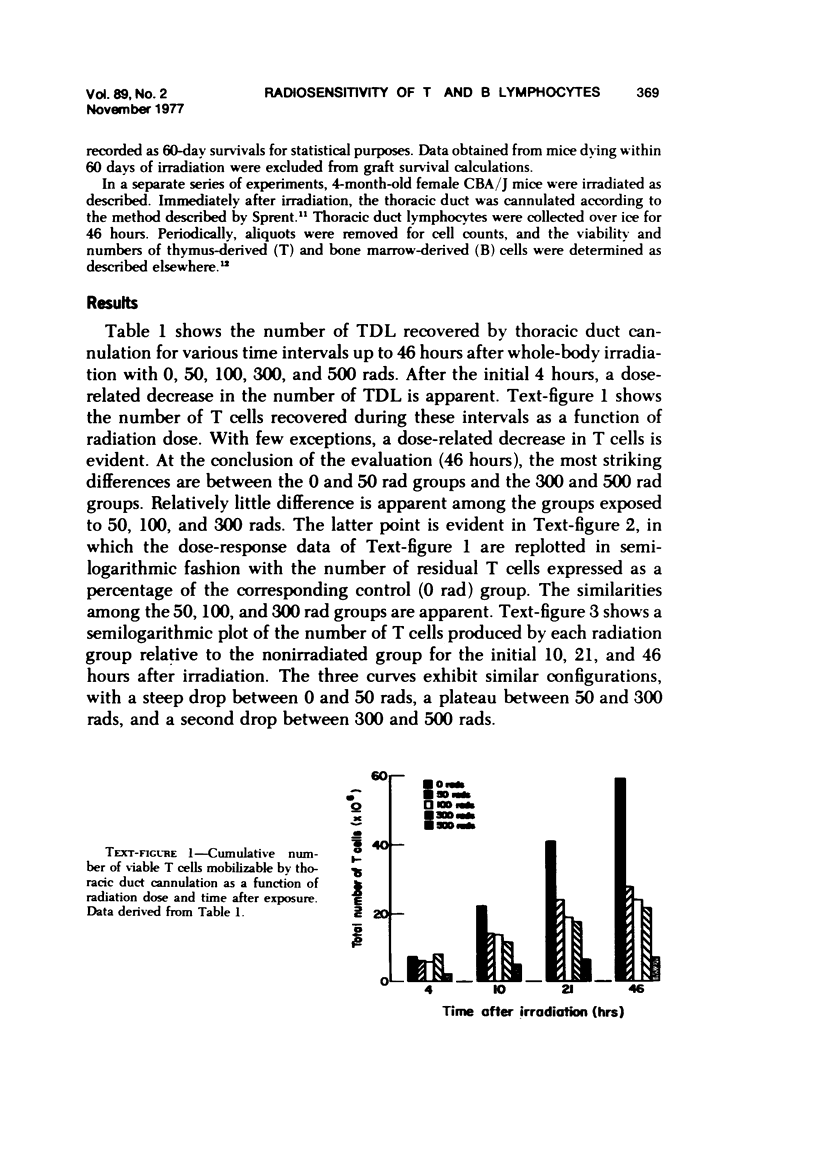
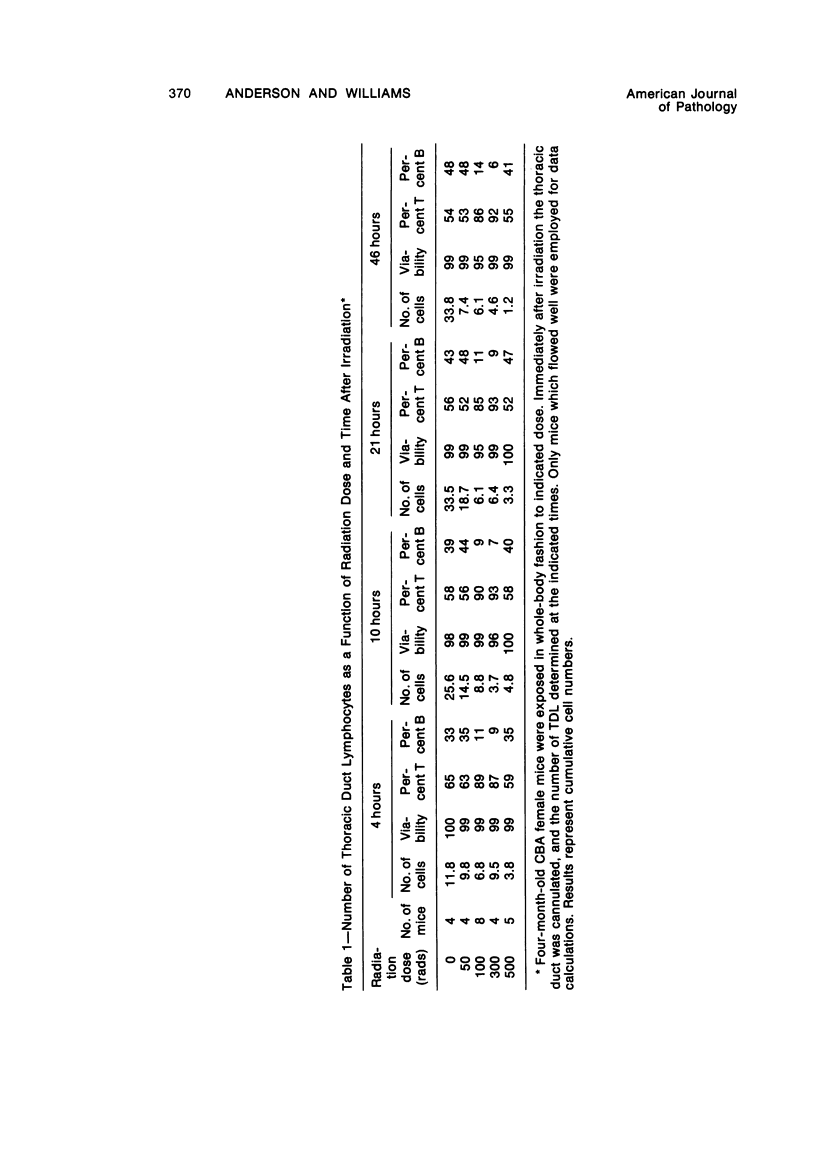

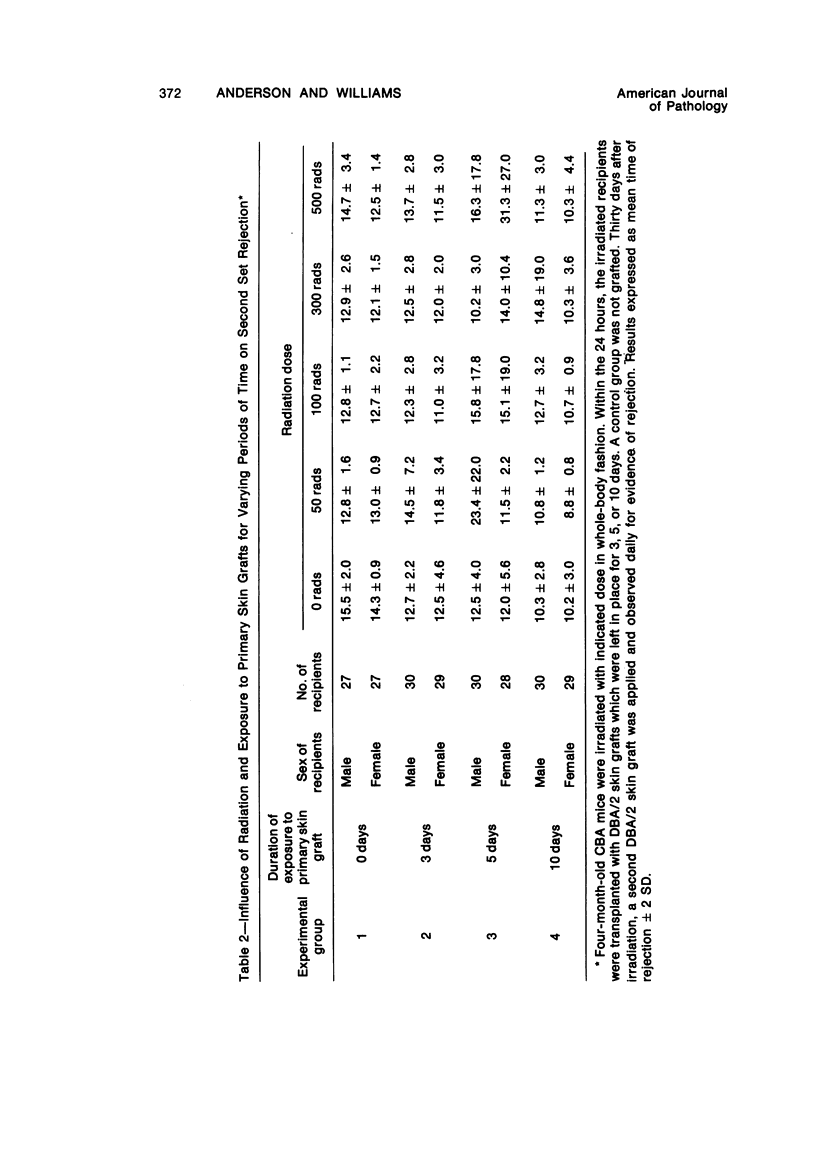
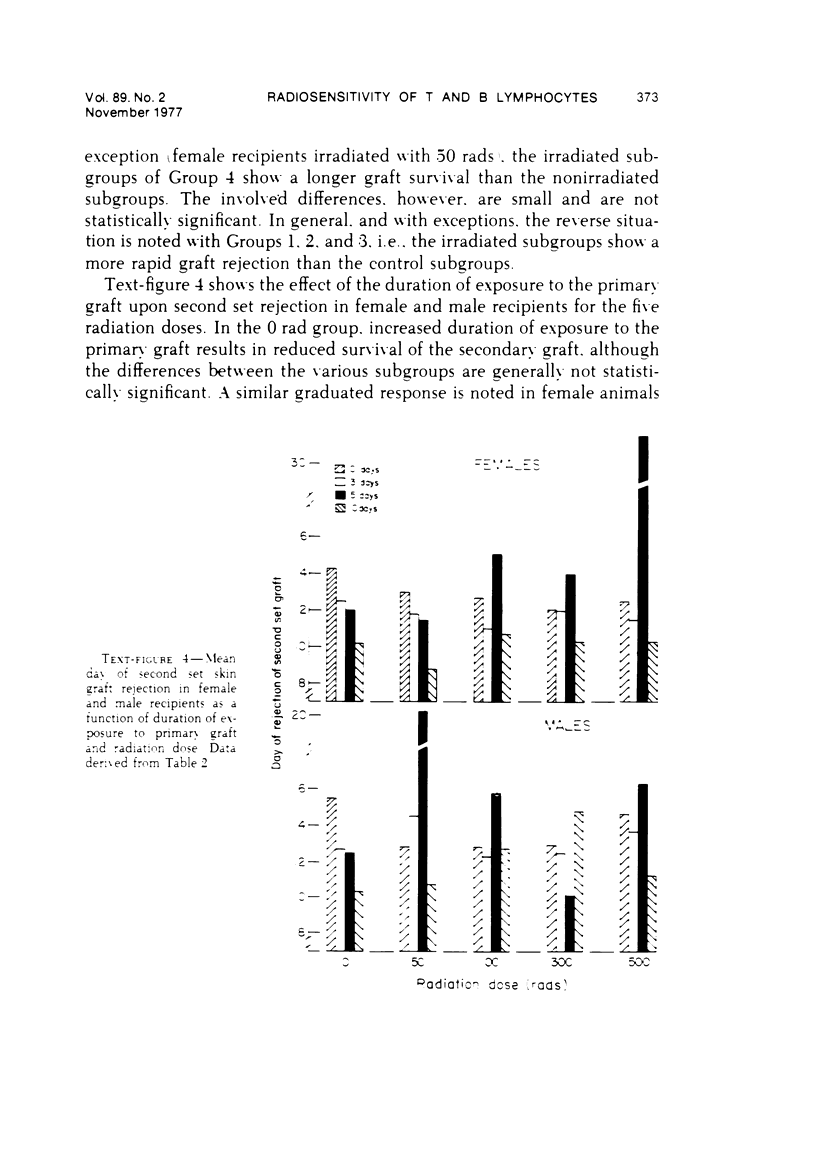

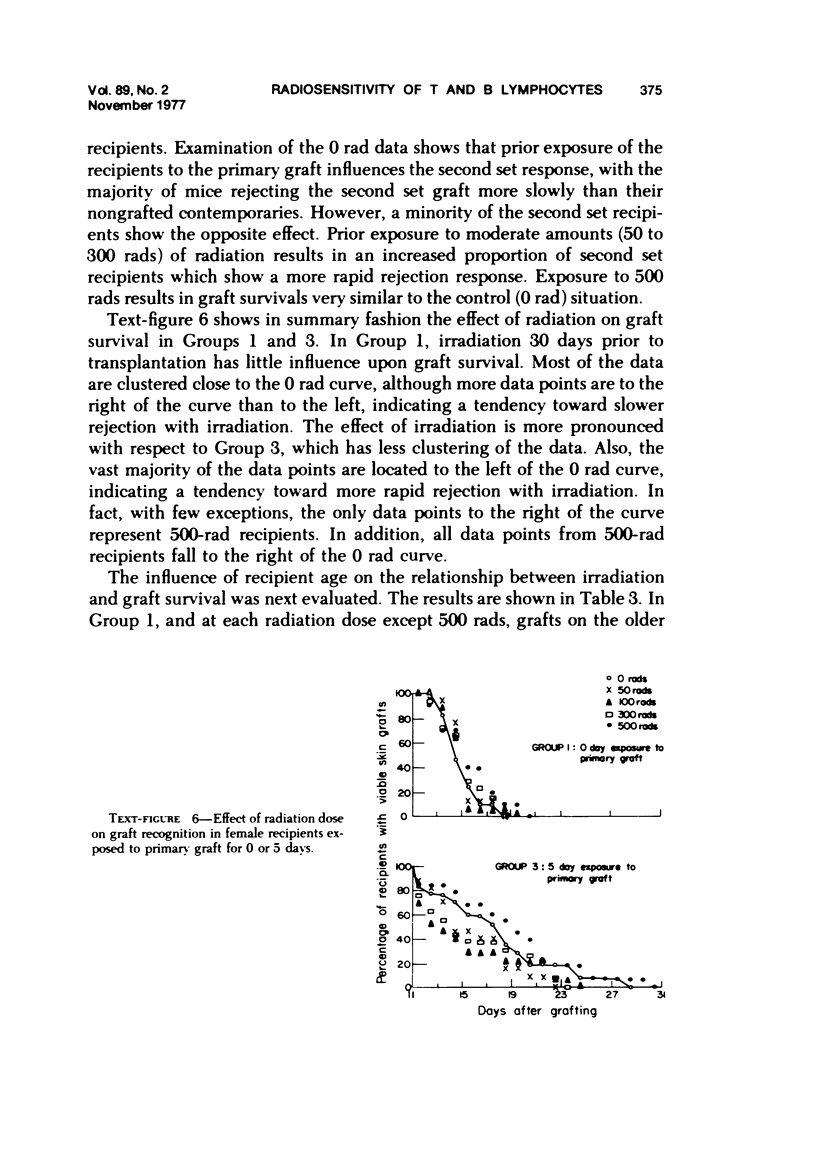
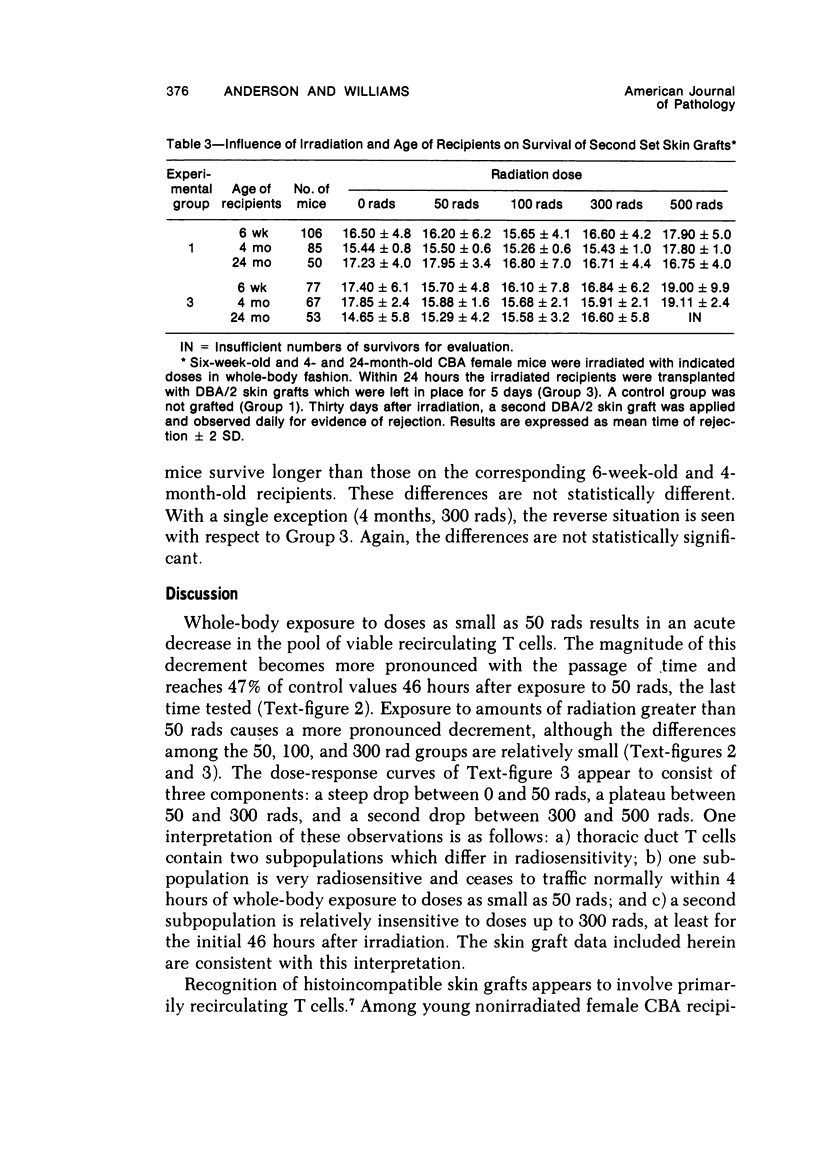
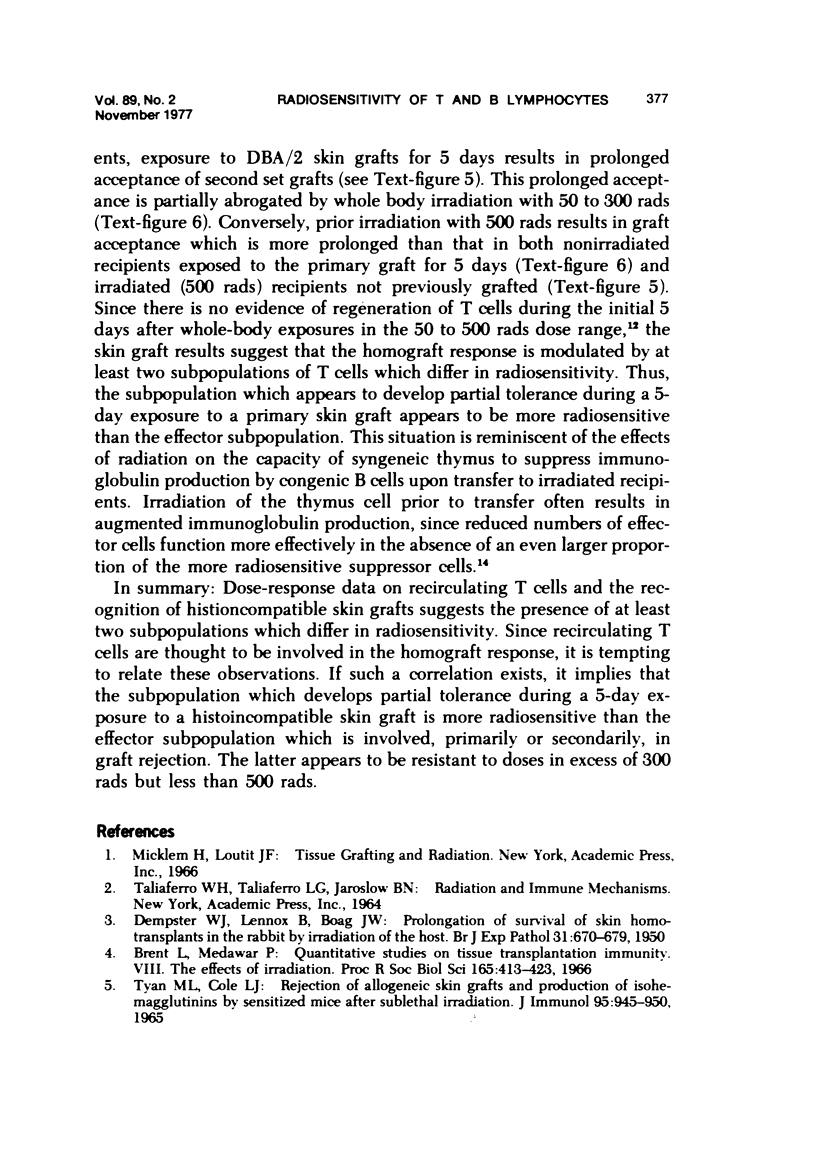
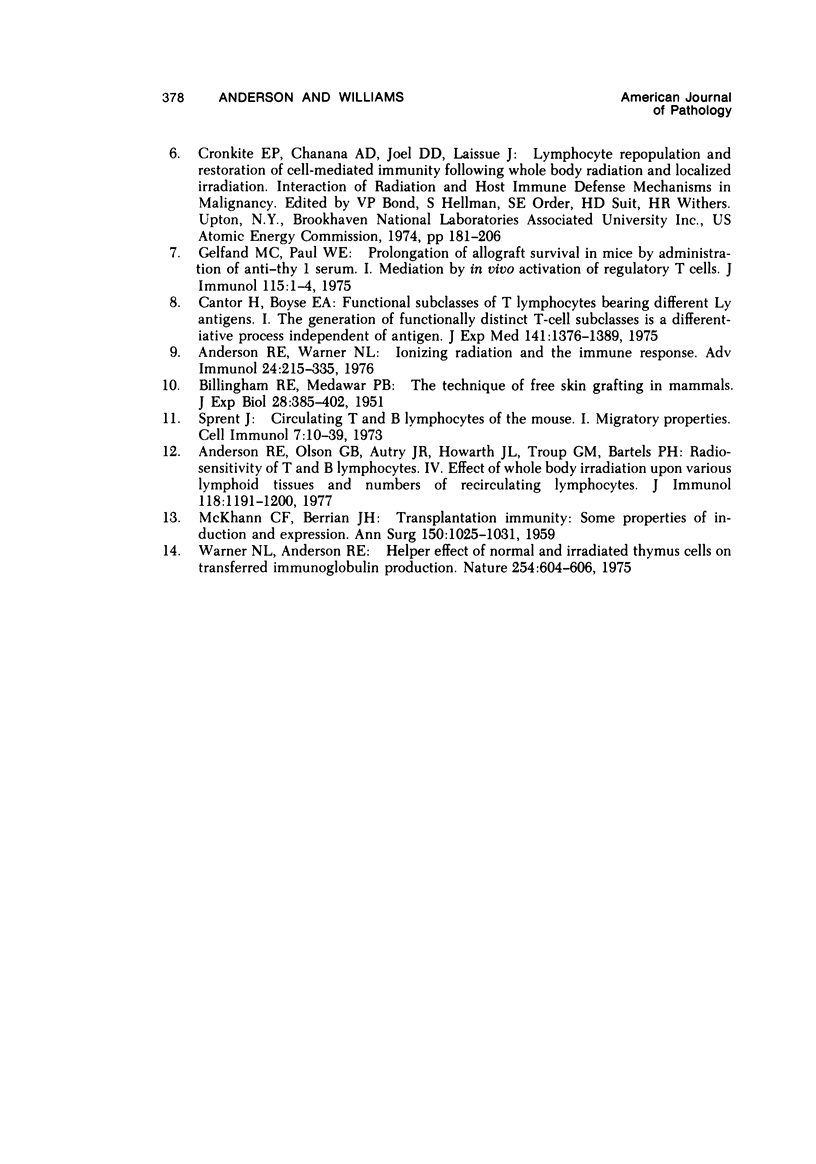
Selected References
These references are in PubMed. This may not be the complete list of references from this article.
- Anderson R. E., Olson G. B., Autry J. R., Howarth J. L., Troup G. M., Bartels P. H. Radiosensitivity of T and B lymphocytes. IV. Effect of whole body irradiation upon various lymphoid tissues and numbers of recirculating lymphocytes. J Immunol. 1977 Apr;118(4):1191–1200. [PubMed] [Google Scholar]
- Anderson R. E., Warner N. L. Ionizing radiation and the immune response. Adv Immunol. 1976;24:215–335. doi: 10.1016/s0065-2776(08)60331-4. [DOI] [PubMed] [Google Scholar]
- Brent L., Medawar P. Quantitative studies on tissue transplantation immunity. 8. The effects of irradiation. Proc R Soc Lond B Biol Sci. 1966 Oct 11;165(1001):413–423. doi: 10.1098/rspb.1966.0074. [DOI] [PubMed] [Google Scholar]
- Cantor H., Boyse E. A. Functional subclasses of T-lymphocytes bearing different Ly antigens. I. The generation of functionally distinct T-cell subclasses is a differentiative process independent of antigen. J Exp Med. 1975 Jun 1;141(6):1376–1389. doi: 10.1084/jem.141.6.1376. [DOI] [PMC free article] [PubMed] [Google Scholar]
- DEMPSTER W. J., LENNOX B., BOAG J. W. Prolongation of survival of skin homotransplants in the rabbit by irradiation of the host. Br J Exp Pathol. 1950 Oct;31(5):670–679. [PMC free article] [PubMed] [Google Scholar]
- Gelfand M. C., Paul W. E. Prolongation of allograft survival in mice by administration of anti-Thy 1 serum. I. Mediation by in vivo activation of regulatory T cells. J Immunol. 1975 Jul;115(1):1–4. [PubMed] [Google Scholar]
- McKhann C. F., Berrian J. H. Transplantation Immunity: Some Properties of Induction and Expression. Ann Surg. 1959 Dec;150(6):1025–1031. doi: 10.1097/00000658-195912000-00009. [DOI] [PMC free article] [PubMed] [Google Scholar]
- Sprent J. Circulating T and B lymphocytes of the mouse. I. Migratory properties. Cell Immunol. 1973 Apr;7(1):10–39. doi: 10.1016/0008-8749(73)90180-9. [DOI] [PubMed] [Google Scholar]
- Tyan M. L., Cole L. J. Rejection of allogeneic skin grafts and production of isohemagglutinins by sensitized mice after sublethal irradiation. J Immunol. 1965 Nov;95(5):945–950. [PubMed] [Google Scholar]
- Warner N. L., Anderson R. E. Helper effect of normal and irradiated thymus cells on transferred immunoglobulin production. Nature. 1975 Apr 17;254(5501):604–606. doi: 10.1038/254604a0. [DOI] [PubMed] [Google Scholar]


